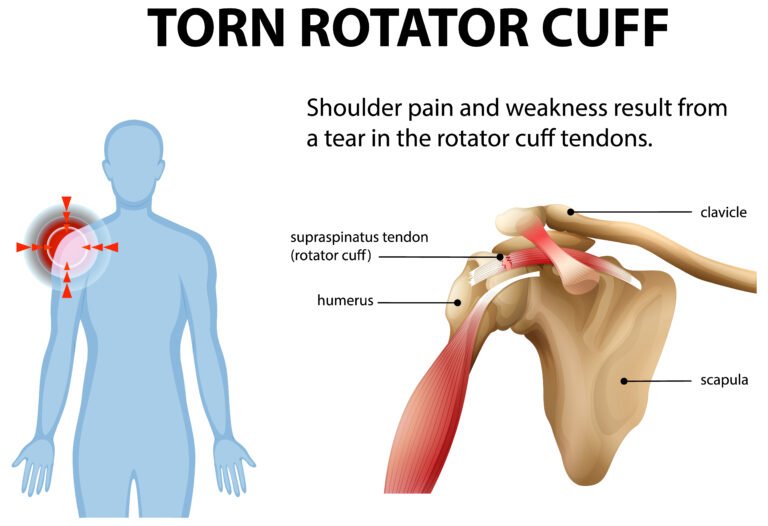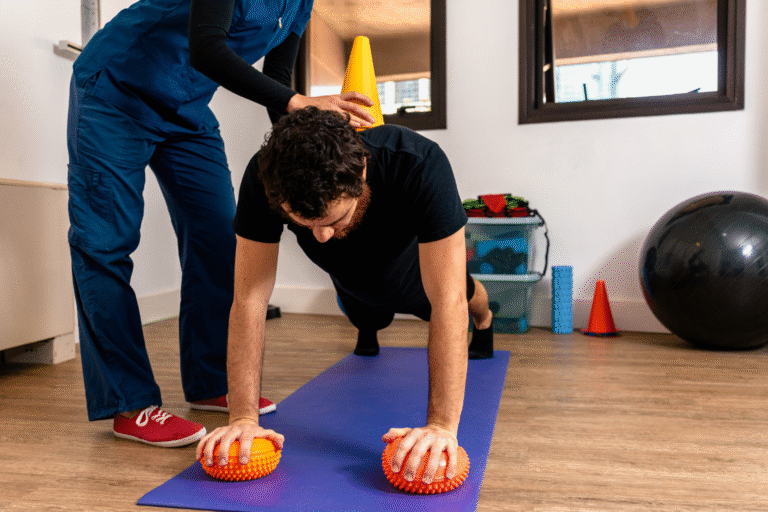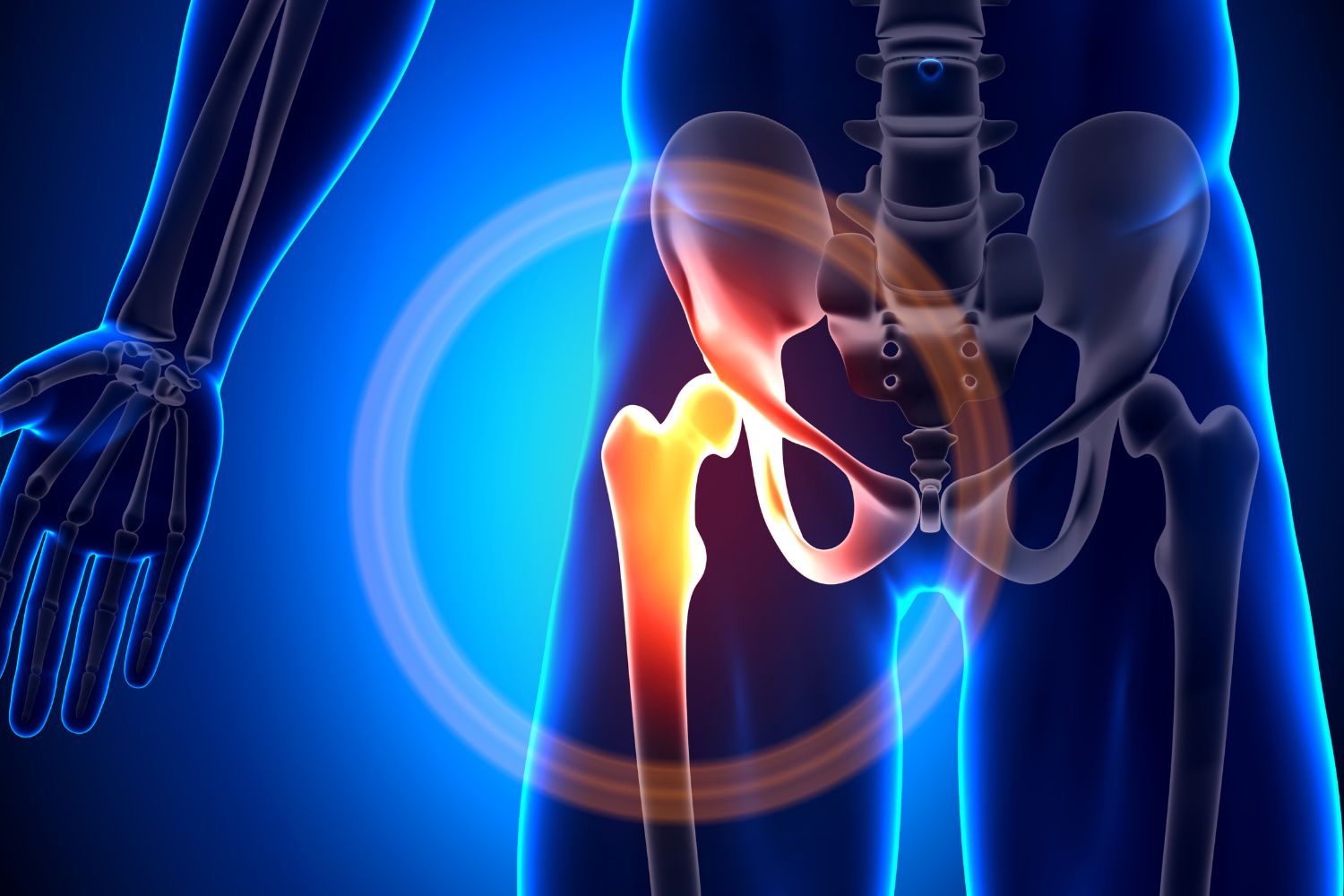
Tight Hip Flexors: How Every Manchester Athlete Can Move Better & Boost Performance
Whether you’re a runner, footballer, or cyclist, tight hip flexors affect your performance in ways you might not even realize. Research shows that runners and cyclists are prone to tight hip flexors because they repeatedly use these muscles to lift their legs, which shortens the hip flexor muscles.
You may finish your training session and in the next minute, you feel a nagging tightness at the front of your hips that won’t go away. Suddenly, simple things like walking up the stairs start to feel uncomfortable no matter how much you stretch.
In this guide, we’ve carefully detailed everything you need to know about tight hip flexors. Local Manchester Athletes will learn why hip flexors tighten, how it affects movement and what they can finally do to fix it.
What Are Hip Flexors?
Your hip flexors are a group of muscles at the front of your hip that lift your thigh toward your chest. These include the iliopsoas (the strongest of the group), rectus femoris (part of your quadriceps), and several smaller supporting muscles.
When running, these muscles help to drive your legs forward. Every time you kick a ball, pedal a bike, sprint, jump, or even walk, your hip flexors are working.
For athletes, these muscles are constantly in use. Footballers use them for kicking and direction changes. Runners rely on them for thousands of repetitions during training runs. Cyclists keep them in a shortened position for hours at a time. Office workers who train after work spend eight hours with them compressed before asking them to perform athletically.
The tightness begins when these muscles become overworked, weak, or stuck in patterns that limit your movement and performance.
What Happens When You Experience Hip Flexor Tightness?
That feeling of tightness in your hip flexors isn’t always about the muscles being too short or inflexible. When your hip flexors hurt, it can be because they lack strength and are suffering from the fatigue of being overworked.
When a muscle is weak or fatigued, your nervous system creates tightness as a protective mechanism. Your body attempts to prevent injury by limiting range of motion, and while stretching might provide temporary relief, it doesn’t address why the muscle feels tight in the first place.
Hip flexor pathology ranges from 5% of injuries all the way to 28% of injuries among high-risk sport-specific groups.
Here are some of the reasons why you probably have tight hip flexors:
Overuse and Training Load: Your hip flexor feels tight because you exceeded its ability to handle the training you were doing, whether running too much, too fast, or not resting enough between sessions.
Prolonged Sitting: Sitting for long periods shortens and tightens the hip flexor muscles. When Manchester office workers go from eight hours at a desk to high-intensity training, their hip flexors struggle with the rapid transition.
Muscle Imbalances: Weak glutes and core muscles force your hip flexors to compensate and take on work they weren’t designed to handle.
Poor Movement Patterns: Compensation from old injuries or biomechanical issues creates altered movement patterns that overload the hip flexors.
How Tight Hip Flexors Kill Performance
Tight hip flexors affect athletes differently depending on their sport. Here are some sport-specific examples of how this issue can show up in performance.
For Runners
Tight hip flexors limit your stride length and reduce running efficiency. When these muscles can’t fully extend during the push-off phase, you end up with a shorter stride that costs more energy.
The tightness also affects your posture during running. Many runners with hip flexor problems develop a forward lean or anterior pelvic tilt that puts extra stress on the lower back. This creates a cascade of compensation patterns that affect everything from foot strike to arm swing.
Manchester runners training on predominantly flat terrain might not notice these issues initially. But as training volume increases, hip flexor limitations become obvious, and the muscles that should be powerful become a limitation.
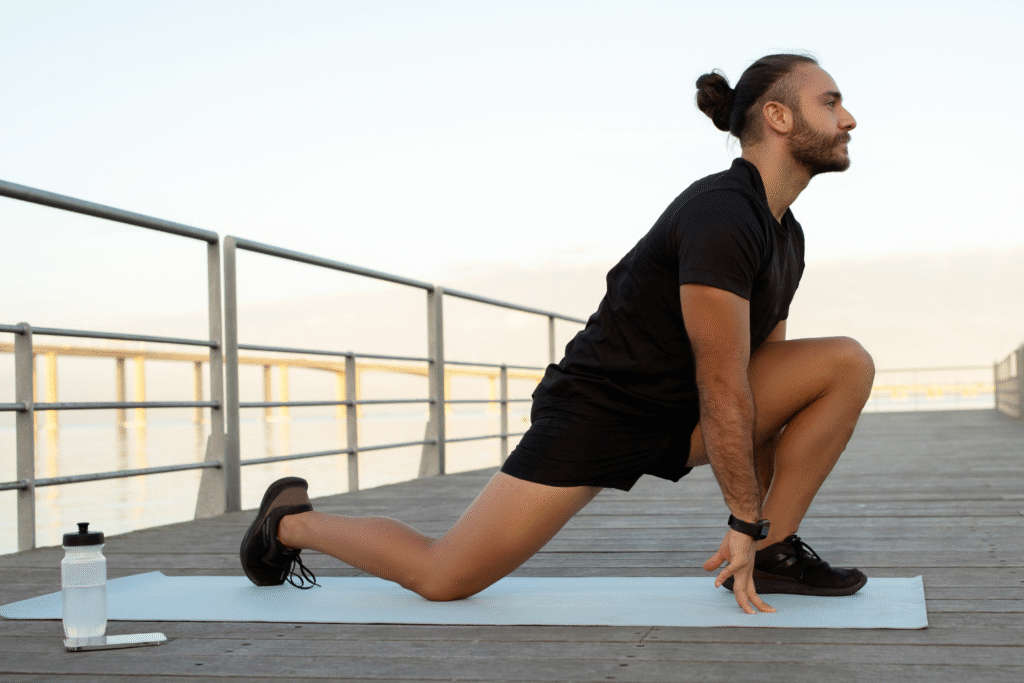
For Footballers
The repetitive responsibility of the hip flexors in football movements makes injury and tightness of the hip flexor common. Every time you kick a ball, sprint, or change direction, your hip flexors fire explosively.
Developing flexibility and strengthening the hip flexors can improve stride length and, many times, speed, agility and overall football performance. When these muscles are tight or weak, your kicking power decreases, your acceleration suffers, and your ability to change direction becomes compromised.
Professional players like Cristiano Ronaldo understood this early in their careers. His recovery protocols at Manchester United included regular work on hip mobility and function because he knew these muscles were critical for his explosive playing style.
Research shows that hip flexor tightness can alter movement patterns and increase risk of lower extremity injury through compensation mechanisms. For footballers playing multiple matches per week, this increased injury risk can derail entire seasons.
For Cyclists
Cyclists face unique hip flexor challenges because the cycling position keeps these muscles in a shortened state for extended periods. Manchester cyclists grinding out long rides or high-intensity interval sessions are repeatedly flexing their hips without ever fully extending them.
This creates a situation where the muscles adapt to the shortened position. When you get off the bike and try to stand upright or run, your hip flexors resist the extension they rarely experience during cycling.
Why Stretching Alone Doesn’t Work
Walk into any gym in Manchester and you’ll see athletes stretching their hip flexors. Lunges, couch stretches, leg swings. These aren’t bad movements, but they’re often not the solution to the problem.
When the body senses instability or weakness, this can often be perceived as tightness. If your hip flexors are tight because they’re weak or overworked, stretching them more aggressively might provide temporary relief but won’t address the underlying dysfunction.
Many athletes also stretch with poor technique, turning what should be a hip flexor stretch into a lower back extension or knee stress. Without proper assessment, you might be stretching the wrong thing or reinforcing the compensation patterns causing problems.
This is where professional assessment becomes valuable. Sports therapists can distinguish between muscles that need stretching from those that need strengthening or different treatment approaches entirely.
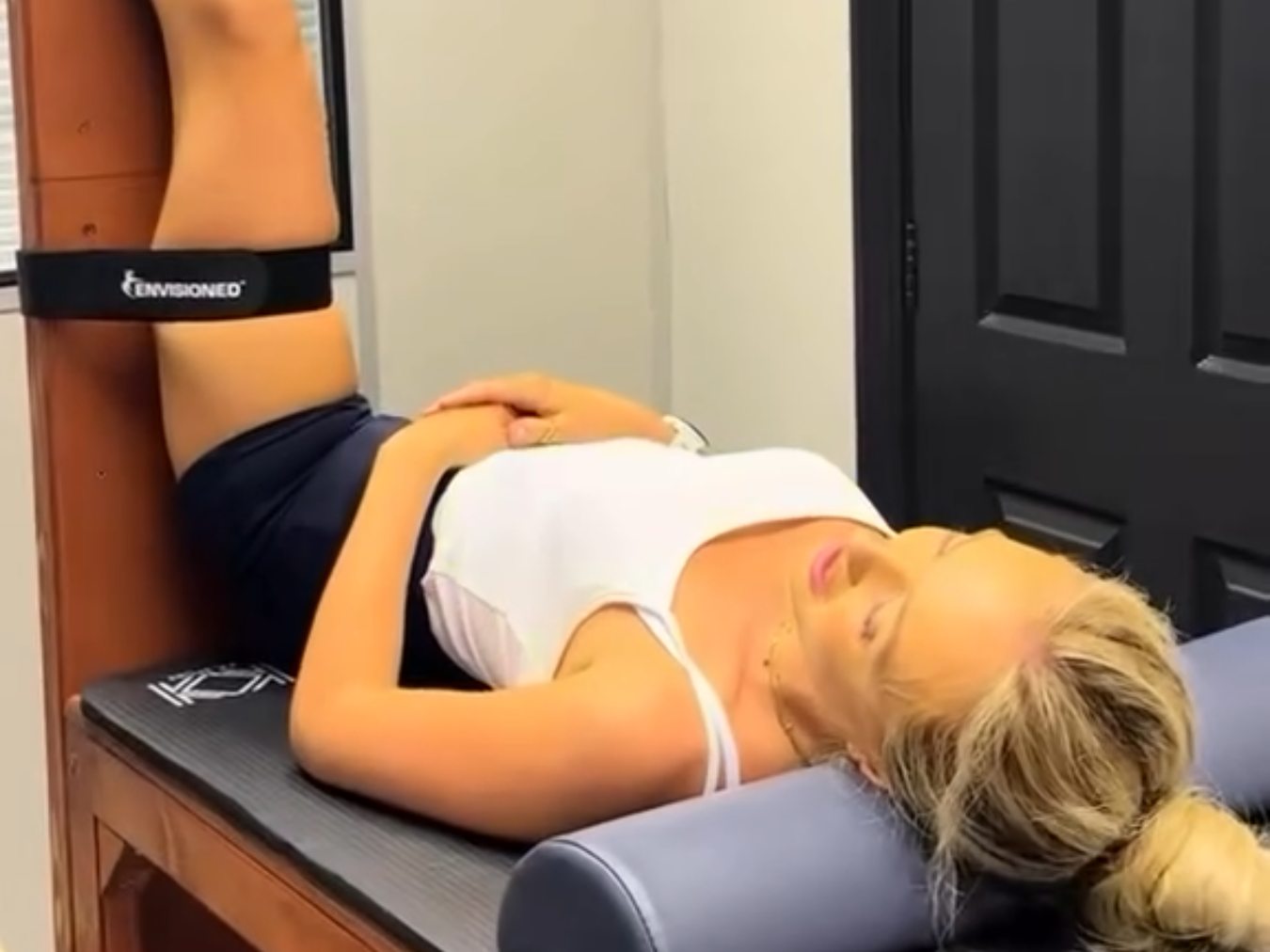
The Role of Sports Massage in Hip Flexor Function
Sports massage addresses tight hip flexors through multiple mechanisms that stretching alone can’t replicate. Skilled manual therapy and muscle stretching helps restore normal muscle function, improve tissue quality, and reset dysfunctional movement patterns.
Releasing Chronic Tension: Deep tissue work on the hip flexors can release adhesions and chronic tightness that develop from overuse or prolonged sitting. This isn’t the same as stretching. Massage breaks up restrictions in the muscle tissue and fascia that limit normal movement.
Improving Muscle Quality: Regular massage maintains healthy muscle tissue by promoting blood flow and reducing the buildup of metabolic waste products. For athletes training consistently, this maintenance work prevents small issues from becoming major problems.
Addressing Compensation Patterns: Hip flexor tightness rarely exists in isolation. Sports massage therapists work on the entire kinetic chain, addressing tight areas while also treating the weak or inhibited muscles that might be forcing your hip flexors to compensate.
Manchester sports therapists who work regularly with athletes understand these patterns. They know that a footballer’s hip flexor tightness might be related to weak glutes, a runner’s issues might stem from poor foot mechanics, or a cyclist’s problems could be connected to bike fit and training load.
Sport-Specific Solutions for Hip Flexor Problems
While the underlying principles of hip flexor health remain consistent, the specific solutions need to match your sport and training demands.
For Runners
Focus on hip extension exercises that strengthen the hip flexors through their full range of motion. Single-leg exercises that challenge balance and stability help develop the control needed for running.
Include regular sports massage targeting not just the hip flexors but the entire anterior chain, including quads, hip flexors, and lower abdominals. Many runners find that bi-weekly sessions during peak training periods keep their hip flexors functioning optimally.
Strength work for glutes and hamstrings helps balance the anterior chain dominance that running creates. When your posterior chain is strong, your hip flexors don’t have to work as hard during the recovery phase of your stride.
For Footballers
Incorporate exercises that strengthen hip flexors through kicking-specific ranges of motion. Dynamic stretching before training and matches prepares the muscles for explosive demands.
Sports massage becomes particularly valuable during periods of high match frequency. When playing twice per week, you need your hip flexors recovering quickly between games. Regular treatment helps maintain function when training and competition leave little time for full recovery.
Work on hip mobility in multiple planes of motion. Football requires movement in all directions, so your hip flexors need to be functional in flexion, extension, and rotation.
For Cyclists
Counter the effects of prolonged hip flexion by including regular hip extension exercises in your training. Standing work and running can help maintain hip flexor length and function.
Post-ride sports massage focusing on hip flexors, quads, and lower back helps restore normal muscle function after long sessions in the saddle. Many Manchester cyclists find that monthly maintenance sessions prevent the chronic tightness that can develop over a season.
Consider bike fit adjustments if hip problems persist. Sometimes the issue isn’t your body but how your body interacts with your bike setup.
When to Seek Professional Help For Hip Flexor Problems?
Some hip flexor issues resolve with basic self-care and training modifications. Others require professional intervention to prevent them from becoming chronic or leading to compensatory injuries.
Seek professional assessment if you experience pain that persists beyond a few days of rest, tightness that doesn’t improve with stretching or self-massage. It’s time for a professional assessment if symptoms affect daily activities, or you experience pain accompanied by clicking, catching, or other unusual sensations.
Hip flexor strains can be particularly tricky. This is especially common in athletes who run, jump, or kick, such as dancers, cyclists, and football players, where the muscles and tendons become sore and inflamed. Without proper rehabilitation, these can become recurring problems that limit your athletic career.
Manchester sports therapists see these patterns regularly. The athletes who address problems early typically resolve them quickly. Those who train through worsening symptoms often end up with months-long recovery processes that could have been avoided.
A Step-by-step Hip Flexor Strategy for Manchester Athletes
Whether you’re training for your next race, preparing for football season, or building fitness on the bike, here’s how to approach hip flexor health strategically.
Current Problem Assessment
If you’re currently dealing with hip flexor tightness or pain, book a comprehensive evaluation to determine the underlying cause. Understanding whether you need strengthening, mobility work, treatment for overuse, or biomechanical correction determines your next steps.
Prevention Protocol
If your hip flexors currently feel fine, preventive maintenance keeps them that way. This includes appropriate strength training for your sport, regular mobility work, periodic sports massage during high-volume training periods, and attention to factors like desk posture and recovery quality.
Sport-Specific Integration
Work with professionals who understand your sport’s specific demands. A therapist who works with runners might not fully appreciate the rotational demands footballers face. Finding someone with relevant experience improves outcomes.
Long-Term Monitoring
Track how your hip flexors respond to different training loads, exercises, and treatments. This information helps you understand your individual patterns and adjust your approach accordingly.
Let’s Make Hip Flexor Health Part of Your Training!
Elite athletes don’t wait until pain forces them to address hip flexor issues. They integrate hip health into their regular training and recovery protocols.
Recovery methods that professional athletes use, including regular sports massage and systematic attention to movement quality, can be adapted for athletes at any level. The principles that kept professional footballers healthy through demanding seasons work equally well for recreational athletes training consistently.
Your hip flexors are involved in almost every athletic movement you make. Keeping them healthy, strong, and functioning properly isn’t optional if you want to perform your best and stay injury-free over the long term.
The tightness you’re feeling isn’t something to ignore or work through. It’s information about how your body is handling your training demands. Responding to that information with appropriate assessment and treatment often makes the difference between minor issues that resolve quickly and chronic problems that limit your athletic potential.
Book a comprehensive hip flexor assessment with our team at Hekas. Manchester athletes trust us to keep them moving, training, and performing at their best. Whether you’re a runner, footballer, cyclist, or multi-sport athlete, we understand the specific demands your sport places on your hip flexors and how to optimize their function for your goals.

